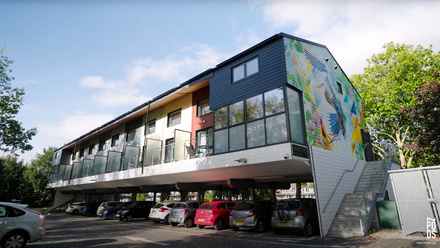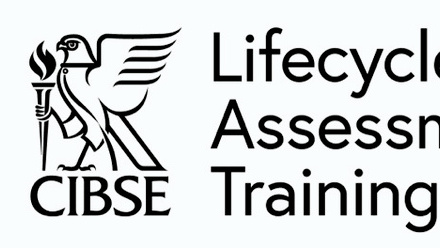Tackling sustainability scepticism in the construction industry
As our built environment accounts for around 40% of national energy use and around one-third of emissions, it's no surprise that the environmental impact of the construction sector is coming under increasingly close scrutiny.
Tall buildings present a particularly difficult environmental challenge, as the embodied energy of these developments – which is the resources required to create and run them – is very high. This is an issue which is likely to only move further up the national agenda as the government puts more pressure on the sector to align with the UK's goal of achieving net zero carbon status by 2050.
Even with initiatives such as the Future Homes Standard (which we'll see updates to in the autumn) forcing the sector to act now, many people in the construction sector are sceptical about the industry's ability to meet the environmental targets it's facing. This was illustrated when we surveyed 200 construction industry professionals recently on the challenges facing high-rise construction, with a third admitting that they don't think net zero new build homes will be possible as standard until at least 2040 and 5% don't think that it will ever be possible.
It's going to be important to combat this scepticism and tackle the roots behind why the industry does not feel empowered to achieve its environmental goals – and quickly. With this in mind, we've looked at several key areas where changes need to be made to the technologies and ways of working which the sector employs.
Making heating and hot water sustainable
As the heating and cooling of residential buildings accounts for a significant percentage of our collective carbon emissions, it's unsurprising that the systems that do this work have become a central part of the sustainability debate. This was highlighted in the 2019 report from the Committee on Climate Change's Mitigation & Adaptation Committee, which recommended that by 2025 no new homes should be connected to the gas grid and that they should instead use low carbon products.
This would mean that all heating and domestic hot water (DHW) systems should be supplied by efficient, sustainable technologies, such as district heating networks and renewable energy sources. Research has shown that replacing conventional heating sources with these systems can significantly improve a buildng's energy efficiency levels.
Overall energy efficiency can further improve by implementing alternative heating solutions, such as radiant heating systems, radiant panels and underfloor heating, which operate at lower temperatures compared with conventional systems. Finally, the overall energy efficiency levels of a development can be further improved with smart energy management technology, such as smart heating controls.
Despite the availability of this technology, only half of the construction industry professionals we spoke with for our research accepted that the disconnect of new homes from the gas grid is a realistic target, with more than 10% believing that the UK will never be able to reach a state where no new homes are connected to the gas grid.
Simplifying sustainable product selection
While we can see that the technologies are available (or are on the way), the scepticism unveiled in our research indicates a worrying trend. One of the ways the industry is helping to address this is by increasing training and education across the sector through the creation of useful tools such as Environmental Product Declarations (EPDs).
These documents help to inform the decisions of specifiers and developers, encouraging the selection of materials and products that have the least environmental impact throughout their lifecycle, from production through to recycling.
An EPD works by assessing a product's environmental impact by measuring its lifecycle against seven key criteria, including:
- Abiotic resources depletion (non-fossil)
- Abiotic resources depletion (fossil)
- Acidification potential
- Eutrophication potential
- Global warming potential (GWP)
- Ozone depletion potential
- Photochemical ozone creation potential
The end result is an independent assessment to set criteria that offers a comparison between similar products, which can then be used to better inform product selection.
In line with EPDs, manufacturers and industry associations are increasingly looking at their systems through a green lens in order to provide further analysis and advice on the environmental effects of different building materials. At Uponor, we recently worked with the British Plastics Federation (BPF) on such an initiative, which saw the creation of a number of bulletins exploring the environmental considerations of hot and cold water supply systems throughout the entire product lifecycle, and which broke down the relevant EPDs in detail.
The bulletins outline how plastic pipes have a significantly lower carbon footprint than copper pipes. Copper still makes up approximately 5% of hot and cold piping systems in the UK single family home housing sector and is even more prevalent in multi-family residential projects. When it came to the assessment, copper routinely scored worse across all the environmental criteria. This was still the case when pipes made from approximately 80% recycled copper were factored into the equation, showing that even though this would save on the extraction of raw materials, when you look at the pipes' sustainable credentials, from cradle to grave, plastic solutions still outperformed them.
EPDs enable consultants to access the environmental impact of a pipe system and consider alternative solutions during the specification process, such as multi-layer composite (MLC) pipes, which can facilitate improved levels of water efficiency, an important sustainability consideration. Consisting of a core of aluminium layered inside and out with polyethylene, an MLC pipe has a smoother internal surface compared with copper and requires fewer connections during installation, all of which makes the water move more efficiently and makes the water distribution system less prone to calcification.
The role of BIM
Alongside choosing the most environmentally friendly solutions for the task at hand, Building Information Modelling (BIM) is also going to play a key role in creating a more sustainable construction industry.
Implementation of BIM can significantly streamline and speed up projects by reducing design clashes, which take up time and effort, as well as by allowing for faster installations. This speed is an environmental benefit, as it means that less energy and resources are used. The enhanced knowledge sharing and decision-making also cuts down on wastage, which can quickly build up during the construction of large-scale developments.
As BIM is so central to the future of the sector, we also looked into its current usage as part of our recent research. Our findings revealed that while 70% of respondents say BIM is essential, on average only 30% of projects implement it. This is backed up by the National BIM Report 2019, which found that while awareness of BIM has grown from 10% in 2011 to around 70% last year, recent adoption levels have been relatively stagnant.
Despite the importance of technology such as this, 40% of the people we spoke to said that a knowledge and skills gap in the industry means that certain technologies are not being adopted as quickly or as fully as they should be.
Looking forward, including sustainability information on each product within a building is going to become an expected part of every BIM model, especially as it's a key part of BIM's seventh dimension. This will provide a holistic overview of how sustainable a building's construction is and, when combined with real-time information of energy usage from the building management system (BMS), means that developers will have the full picture of how sustainable a building is from construction to operation.
Achieving a sustainable construction sector
A combination of the high standards expected, the ongoing skills shortage and a lack of awareness and education regarding the more sustainable products, solutions and ways of working, were all highlighted in our research as significant hurdles towards making construction a more sustainable sector. These findings suggest that major changes are required in the industry's approach to green building if net zero construction is to become a reality rather than a pipedream.
Fortunately, there are new products, new ideas and new ways of working coming to the fore, which will all help the industry move in the right direction. However, the industry needs to move quickly if it is going to be in with a chance of adapting itself to a better way of working with enough time to meet its looming environmental deadlines.
This article orginally appeared on PBC Today and is written by Zisis Nikoloudis





